History
- Squadron
- Cadets
- Civic Duties
- Flying
- Gliding
- Band
- Camps
- Drill
- Duke of Edinburgh
- First Aid
- Outdoors
- Shooting
.jpg)
Squadron
The Squadron was originally formed on, the 24th November 1967 as a detached flight to 292 (Eccles) Squadron.
After a nomadic period in which, the wandering flight had four consecutive homes. It finally settled on Highfield Road in Little Hulton, which the council finally acknowledged on the 10th March 1974.
1099 Squadron was one of four squadrons, that was authorised to take girls within East Lancashire Wing in January 1984. From then on, some would argue, that things have never been the same!
From 1st November 2011 a new wing was formed. This was created, sadly, by the closing of East Lancashire Wing and East Cheshire/South Manchester Wing. Both were merged to create the new Greater Manchester Wing. It is the largest wing in the Corps with some 1500 cadets and currently 37 squadrons.
Despite the sad loss of East Lancs, there are some exciting changes and developments and we will try to engage the Squadron as much as we can. Some squadrons in the northern end of East Lancs were merged into what was Cumbria and North Lancs. This merge saw a change of wing name to Cumbria and Lancashire Wing.
Squadron Crest
Nulli Secundus
Some of the Squadron’s history is recorded in the Squadron’s Crest, which was designed by Cadet Warrant Officer Mike Willemsen.
Nijmegen
The Crest symbolises the Nijmegen March, an event that takes place every year. The March commemorated in the Crest, was completed by a group of cadets from 1099 Squadron and 319 (City of Salford) Squadron. The group completed the march of twenty-five miles per day, over four days and were the first Air Cadet group to finish.
Social Media
Instagram... Twitter... Facebook...
Former Members Facebook...
Contact...
Squadron Gallery...
.jpg)
Cadets
Cadets started at 13 years 9 months old and could continue till 20 years old. The upper age limit could be extended to 22 years old on reaching Cadet Warrant Officer.
As now there was a trial period for fitting in. Probationers would be taught the rudiments of drill, the Air Training Corps, the Royal Air Force and the History of Flight.
The first step was the enrolment and being fitted out for the uniform, earlier on being the battle dress and matching itchy woollen trousers. This was replaced by a phasing in of a woollen jumper and smoother trousers!
Squadron Activities
An evening would usually start with band practice, followed by role call.
Activities would be broken up into two halves containing lessons, drill, projects, etc.
A small canteen was provided for break time, usually staffed by the Civilian Committee.
The squadron would finish with final parade, with announcement for upcoming events and presentation of awards.
Girls Introduced
 thumb.jpg)
In January 1984 the Air Training Corps opened its ranks to girls.
Worsley Squadron was one of four squadrons in East Lancs Wing to first offer places. Jane Allcroft was the first girl to take up a Worsley placement.
The girls have made considerable contributions to the Squadron successes. Their presence has been felt on the parade square, in sporting achievements, in the air and in the academic field.
Cadet Warrant Officer Samantha Kelly was the first girl, to gain the Gold Duke of Edinburgh Award in the East Lancashire Wing.
Progression
Before cadets could do most of the activities, the First Class Examination had to be passed.
This allowed them to go flying, gliding, camps etc. The classification system gave a basic knowledge to the activities undertaken.
Each classification required that you pass, a series of multiple choice examination papers. This is now done on line when the candidate is ready.
Classifications
The Classification Syllabus was reformed in September 2010. Before then the syllabus ranged from, Probationer to the following classifications, having badges:
First Class CadetThe following elements were included in this introduction to Cadet Training: The ATC, the RAF, History of Flight, Principles of Airmanship, Map Reading, Initial Expedition Training, Basic Radio Communications and Drill.
Leading CadetIntermediate training in the following subjects: Airmanship Knowledge, Principles of Flight and Basic Navigation Using Map & Compass
Senior CadetAdvanced aviation training in 3 subjects.
Staff CadetSpecialist aviation training included 3 subjects not undertaken at Senior Cadet. A practical demonstration in lecture technique and an interview with a Wing Staff Officer.
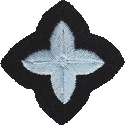
First Class
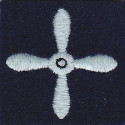
Leading
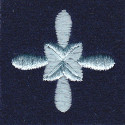
Senior
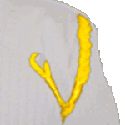
Staff
These were taken over a period of years from joining. Each classification required passing, a series of examination papers that were multiple choice.
Promotion
After some time and providing a level of leadership, responsibility and commitment were shown cadets could be promoted.
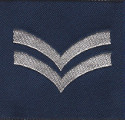
Corporal

Sergeant
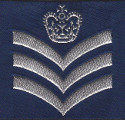
Flight Sergeant
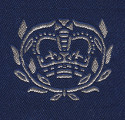
Cadet Warrant Officer
Civic Duties
Many cadets have joined the services, both military and civil over the years.
There is a memorial window in Eccles Parish Church which commemorates, cadets of Salford, Eccles and Worsley and their losses during the war.
The Squadron has been and is involved with charities, the parish churches, civic parades etc., providing cadets for fundraising and the Squadron Band leading many parades.

Memorial Window
.jpg)
Battle of Britain Parade
.jpg)
Little Hulton Carnival
Royal Air Force Association...
The Squadron had strong links with the Swinton branch of RAFA and fundraised, every year for the Battle of Britain Wings Appeal. Since they adopted the Squadron in 1970, the cadets have raised over £45,000 for this appeal alone.
Sadly due to declining numbers, Swinton Branch of the RAFA has closed.
The Squadron still fundraises for RAFA with events organised by Greater Manchester Wing.
Royal British Legion...
The Squadron fundraised during the poppy appeal for the Little Hulton Branch.
The Squadron Band would lead the parade from the Branch to St Paul, Peel Parish Church until the Branch Closed.
The Squadron still attends the Cenotaph at St Paul, Peel Parish Church.
SSAFA...
The Squadron has strong ties with the Association, helping with bag packs at local supermarkets.
Children in Need...
The charity is well supported by the cadets, having a fancy dress party and a fundraising buffet.
Overall fundraising has exceeded £100,000 for various groups and charities.
Air Experience Flying
In 1943 the government set up 10 aircraft of Oxfords and Dominies, for the sole purpose of giving cadets an Air Experience Flight. In 1957, 50 Chipmunk aircraft were brought into service and spread between 13 Air Experience Flying Schools. In 1996/7 the ATC started to use the Bulldog aircraft, that were used by the University Air Squadrons.
1999 saw the introduction of the Grob 115E Tutor, although it took some time for this aircraft to come into service at each of the flying schools. RAF Woodvale (Formby Near Southport) is the flying school, that is still used today by cadets, flying at 10 AEF School.
Aircraft
.jpg)
Chipmunk
.jpg)
Bulldog
.jpg)
Grob 115E Tutor
Flying Scholarships
The RAF Flying Scholarship helped cadets towards their Private Pilots License. This became the Air Cadet Pilot Scheme, comprising of three courses; Air Experience Flight, Air Cadet Microlight Course and the Air Cadet Light Aircraft Scholarship.
In addition to these, there was also the Air Cadet Pilot Navigation Scheme.

Flying Scholarship

Microlight

Navigation
These badges were superceded in 2017.
Flying Gallery...
Gliding
In 1946 the government introduced 350 Kirby Cadet Gliders, at 84 elementary gliding schools around the country. Cadets learned the basics by sitting at the controls and ‘being winched’ across the airfield. In between 1948 and 1950 there was a major change in policy and a two-seater glider that actually flew in the air was introduced!
1970 saw the introduction of self launched gliders (SLG), called the Scheibe Fake 25B which was built by Slingsby. It had an engine and a propeller and could take off and land like a light aircraft. Once the correct height had been gained, the engine would be turned off, the propeller was stopped by a brake mechanism and the aircraft flew like a glider.
Some modifications took place in 1977 and the new aircraft became the Venture Mk 2.
In 1982 modern gliders replaced Sedbergh’s and Kirby Cadet MkIII's. These were the Vanguard, a tandem two-seater and the Valiant, a single-seater. Further changes in 1989/90 saw the introduction of a new motorised glider, the SLG-Grob 109, later renamed as the Vigilant.
Gliders
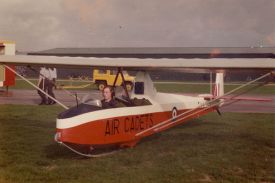
Kirby Cadet Mk lll
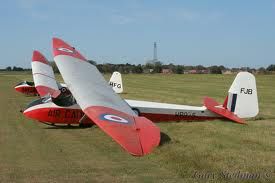
Sedbergh
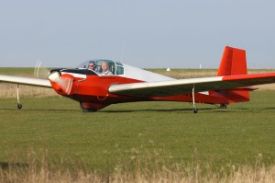
Venture
.jpg)
Vanguard
 thumb.jpg)
Vigilant
Gliding Scholarships
Cadets attended one of the gliding schools either on a weekly course or weekends. The weather, followed by the cadets aptitude usually dictated the length of the course. After three solos the cadet was awarded Gliding Scholarship Wings.
The scholarship developed into a advancement system with cadets earning Blue, Silver or Gold.

Gliding Scholarship

Blue

Silver

Gold
These badges were superceded in 2017.
Gliding Gallery...
Squadron Band
The Squadron President, Mr Tim Willemsen has been around almost since the squadron started in 1967 and vaguely remembers somebody going out, buying a drum sometime in 1971!
The Band became popular at many local parades and has led Remembrance Parades in Little Hulton, Walkden, Swinton and Boothstown.
Entering the Wing Band Competition, the Band always doing well and winning on occasions, was selected to lead the Wing on Annual Inspections. The Band has also led the ATC Day Parade in Manchester.
The Band joined with many other youth bands, to take part in the National Music Day Parade in London, attending in 1992 and 1996.
.jpg)
Squadron Band 1975
.jpg)
London 1992
.jpg)
ATC Sunday 2005
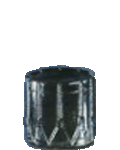
Drummer
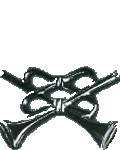
Trumpeter
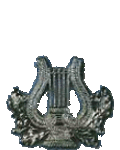
Musician
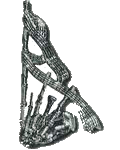
Piper
Band Badges
These badges were awarded on musical abilities and were superceded in 2017.
Squadron Band Gallery...
Camps
Each year selected cadets were and are still chosen to attend a summer camp at a RAF Station for a week. Some cadets were sent to Wing, to be selected for Overseas Camp. Such countries as Cyprus, Germany, Gibraltar, Hong Kong and Malta. Hong Kong and Malta have now closed but cadets still get the opportunity, to bid for the remaining overseas camps.
Pre-entry Visits
There was also a three day incite into RAF Training at the technical bases including RAF Cosford, Halton and Locking.
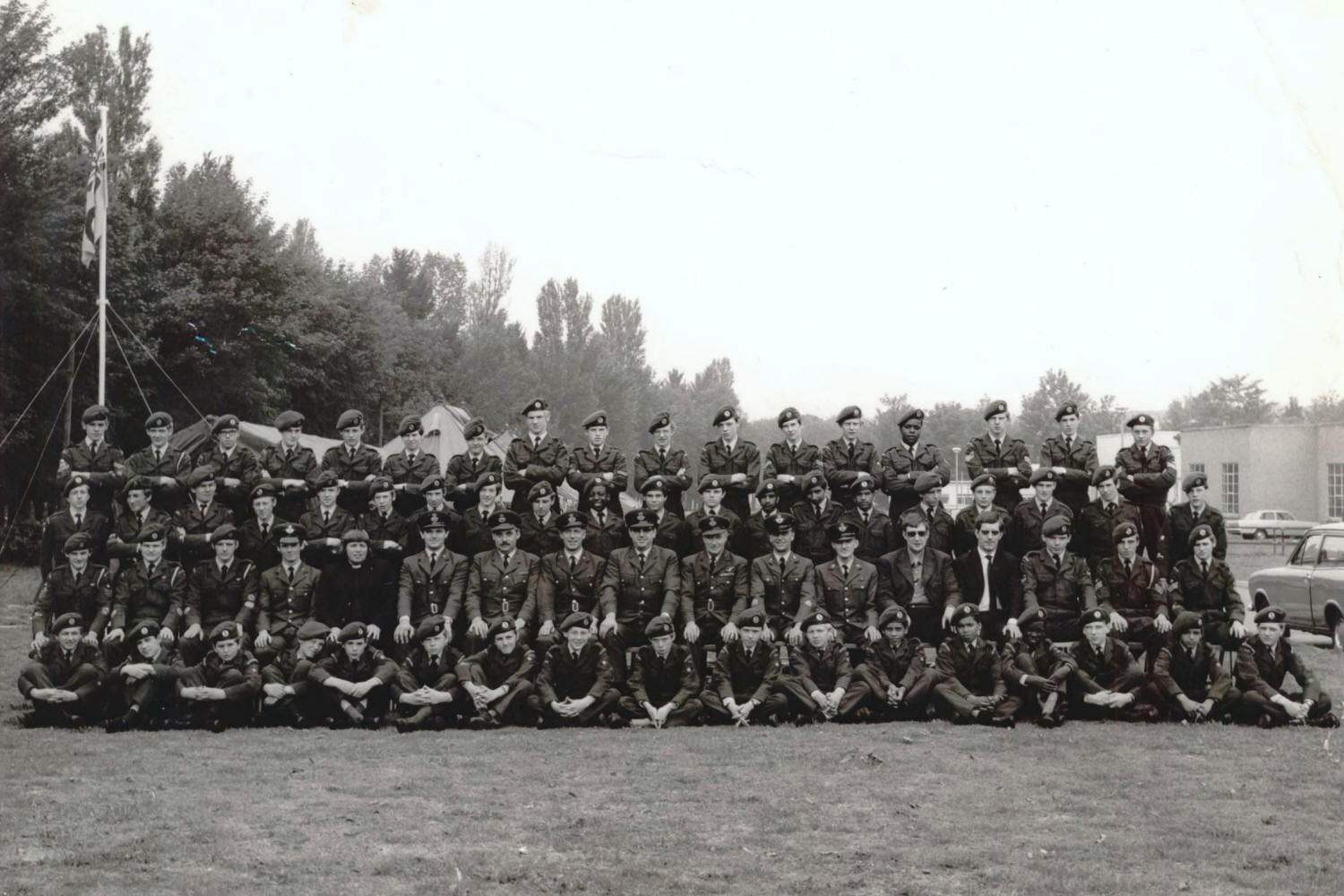
RAF Benson 1972
.jpg)
RAF Gibraltar 2002
.jpg)
JHQ Rheindahlen 2011
Camps Gallery...
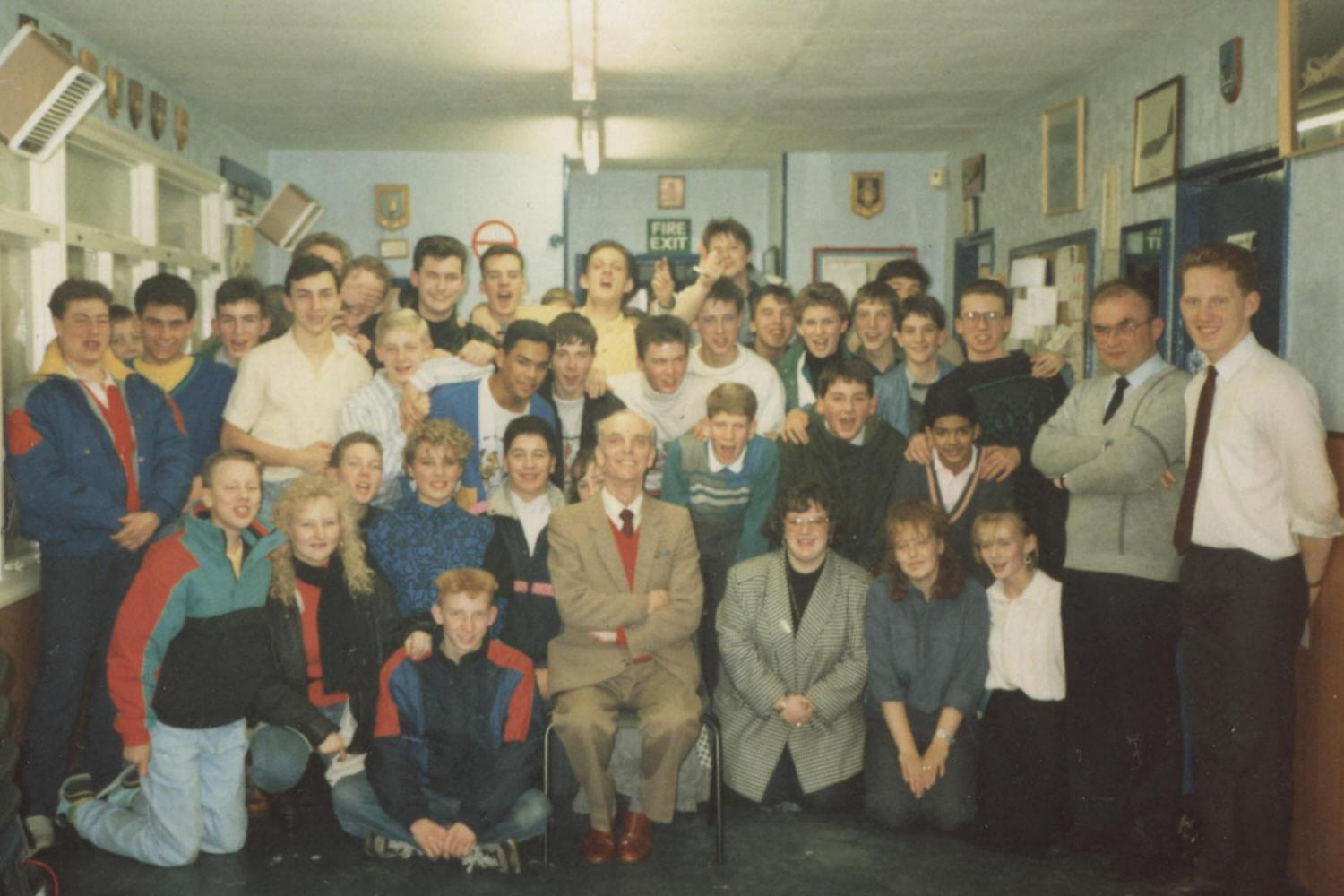
Drill
AWO Johnson was responsible for discipline and drill. His passion for drill inspired the Squadron, to win the Wing Drill Competition, on many occasions. This allowed the Squadron to compete at regional level, obtaining second place in 1992. The Squadron inter-flight drill competition is named after him, with two shields donated by his widow Mrs Mary Johnson.
Such was his dedication to drill, that Wing also have a shield in his name. Originally every Squadron submitted one Junior Cadet and they were judged on dress and deportment. Proudly, this trophy has come home, more than once. Now the award is given to the best NCO in charge of each drill squad based on their inspection and performance.
Duke of Edinburgh Award Scheme
The squadron has always been very active in the award scheme, with many awards being gained.
Cadets visited Police, Fire Brigade, Mountain Rescue and helped the local community in various projects, as part of their service.
The expeditions have taken cadets to South Lancs Moors, Peaks, Lakes, Scotland and Wales.
The Squadron has attended St. James Palace in London and the Palace of Holyroodhouse in Edinburgh for several years, as cadets gained their Gold Duke of Edinburgh Award.
.jpg)
Service
.jpg)
Expeditions
.jpg)
Presentation
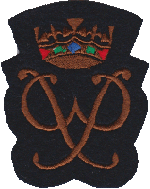
Bronze Award
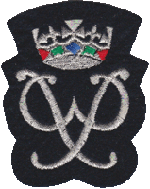
Silver Award

Gold Award
Duke of Edinburgh Award Badges
These badges were superceded in 2017.
Gold Award Presentations Gallery...
.jpg)
First Aid
Basic first aid was first taught with guest speakers from St John's Ambulance. Later these developed into a course, again taught by volunteers from St John's.
Around 2009 cadets could wear the St John's First Aid Badges, after doing the relevant course. Youth First Aid aimed at under 16's, progressing to Activity First Aid for the over 16's.
The Squadron became very active where first aid was concerned, showing in the competition results.
It is now mandatory that staff and staff cadets hold a valid first aid certificate.

Youth First Aid

Activity First Aid
First Aid Badges
These badges were superceded in 2017.
Adventure Training
The Squadron has always played a part in Adventure Training, thanks to Flight Lieutenant David Blaydes. His interest in the Duke of Edinburgh Award Scheme, ensured parties of cadets to sample life walking and camping. A further influence was that of Mr Mike Willemsen, who became a Civilian Instructor after leaving cadets. Mr Willemsen opened up the outdoors, with colleagues by introducing rock climbing and canoeing.
Scotland was the next challenge, with the use of Joint Services Mountain Centres and private huts. This led to a weeks activities in relative luxury compared to camping. In this fashion Ben Nevis was conquered in snow. Other Munros have been done by the Squadron but Squrr à Mhaim (1099m) has still to be bagged by cadets.
With the use of Forces and Cadet Activity Centres, combining residential and squadron staff, much has been achieved. Duke of Edinburgh Award expeditions are still carried out:
- Bronze - West Pennine Moors
- Silver - Lake District
- Gold - Scotland
Though the equipment and clothing may of improved , it still needs the spirit of the cadets to achieve the results, the Squadron is proud of.
.jpg)
Expeditions
.jpg)
Adventure Training
 thumb.jpg)
Fieldcraft
Fieldcraft
From the humble beginnings of the Plantations night exercises, field-craft moved on to weekend exercises at Holcombe Moor Army Training Camp. Demonstrations of field-craft elements: patrolling; guarding; vehicle searching; etc. are done by squadron staff and former cadets that are TA members. The assault course is completed and is included in the inter-flight competition.
All the lessons are brought together, in a night exercise. The Senior NCOs are faced with the added tasks of rotating guard duties, messing and morale building activities. A new field-craft training manual came out in 2007. This extended opportunities for some skills to be extended and developed and now normally takes place on RAF stations.
Adventure & Leadership Gallery...
Expedition Gallery...
Shooting
Shooting has always been popular on the squadron. Visiting local civilian ranges, using the No 8 .22 rifle and on camp, using the No 4 .303. Wing summer camps also opened up opportunities, to use the larger bore weapons. The No 4 being well known for it’s kick, bruising many shoulders. Using the beret as padding was always popular, except for the cadets that put the cap badge in the way!
In the late 70’s saw the introduction of the 7.62mm SLR to the cadets. The SLR had a reduced kick and self loaded but was still a long heavy rifle for cadets. In the 80’s the Squadron used Worsley Rifle and Pistol Club range. Here the cadets used a Martini-Henry type action .22 rifle. Though easier in operation to the No 8 it was still a heavy rifle.
The 80’s also saw the introduction to the L98-A1 rifle with a bore of 5.56mm (.223). This single shot, magazine feed rifle is short and light. This shows itself in marksman results, the Squadron holding more RAF than ATC Marksman Awards. The 90’s saw the demise of civilian gun clubs, so the Squadron needed a new home range. Warrant Officer Eric Shaw constructed an air rifle range on the squadron. The Squadron also focused it’s attention on the local TA and cadet ranges in the area.
Fulwood barracks at Preston was used for L98 shooting, where the Cadets were giving the opportunity to use the Small Arms Trainer (SAT) an elaborate electronic computer range! The Squadron moved on once again to the ranges at RAF Sealand, using these facilities many times over the years. With the closure of RAF Sealand in 2006, we were forced to use ranges further away. During 2007 and partly into 2008 we used RAF Cosford ranges. From May 2008, we have since moved to RAF Shawbury Range which has recently been refurbished.
There is now greater emphasis on coaching skills with Staff now trained as qualified coaches, before they can apply to be a Range Conducting Officer (RCO). Other courses available are, Weapons Instructor and Gallery Range Officers.
Ranges
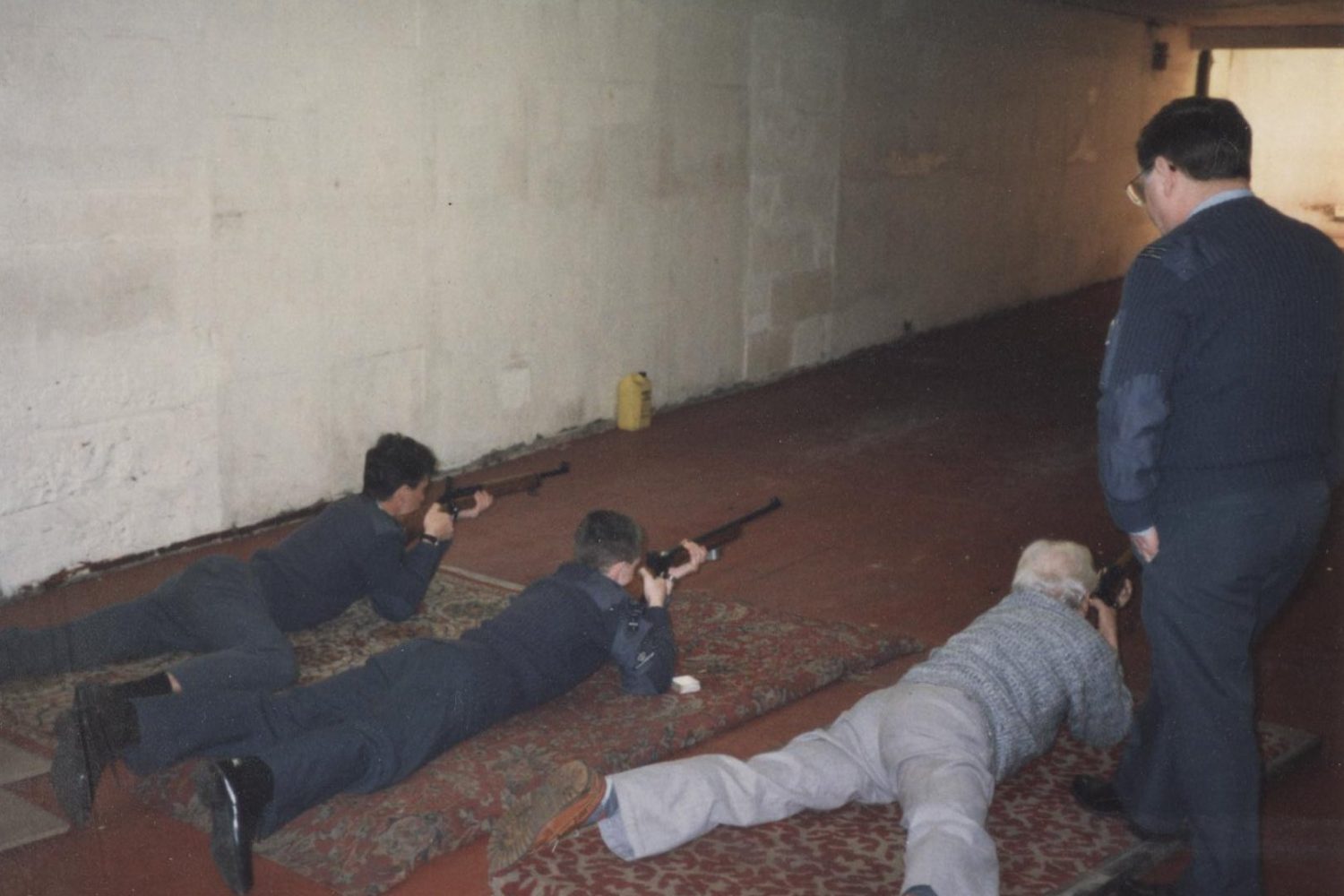
Indoor Range
.jpg)
Barrack Range
.jpg)
Gallery Range
The ATC Marksman was awarded on the .22 rifle and the RAF Marksman was awarded on a full bore rifle. The Cadet 100 was awarded at Bisley.
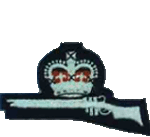
ATC Marksman
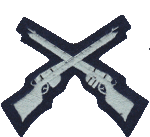
RAF Marksman

Cadet 100
Marksman Badges
The criteria for Marksman became more progressive and was renamed Squadron, Wing, Regional and Corps. The Cadet 100 was still awarded at Bisley.
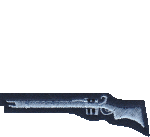
Squadron

Wing

Regional
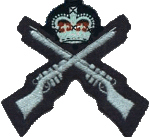
Corps

Cadet 100
These badges were superceded in 2017.